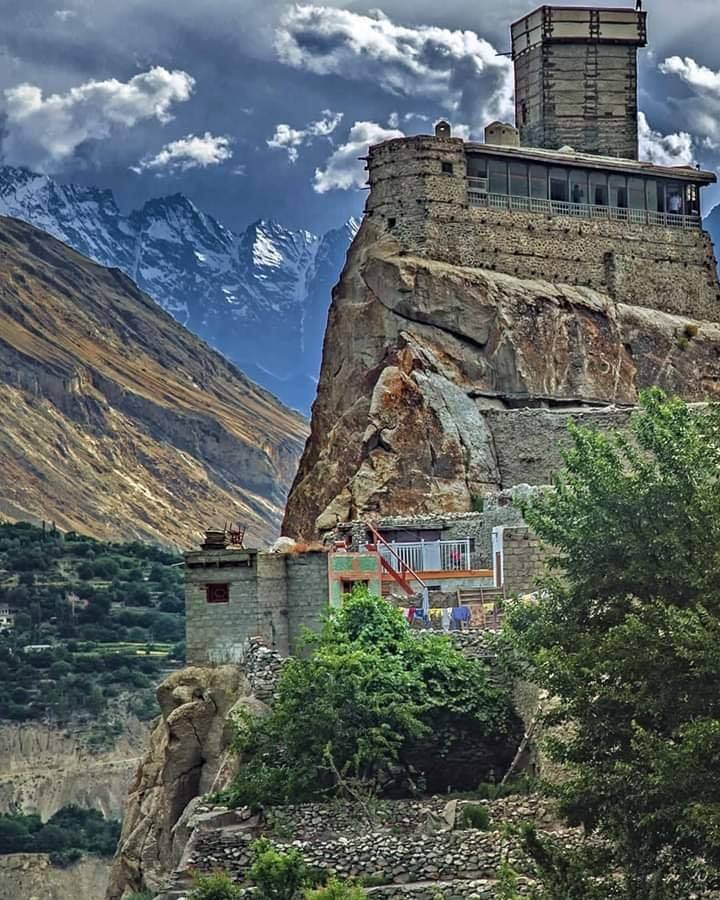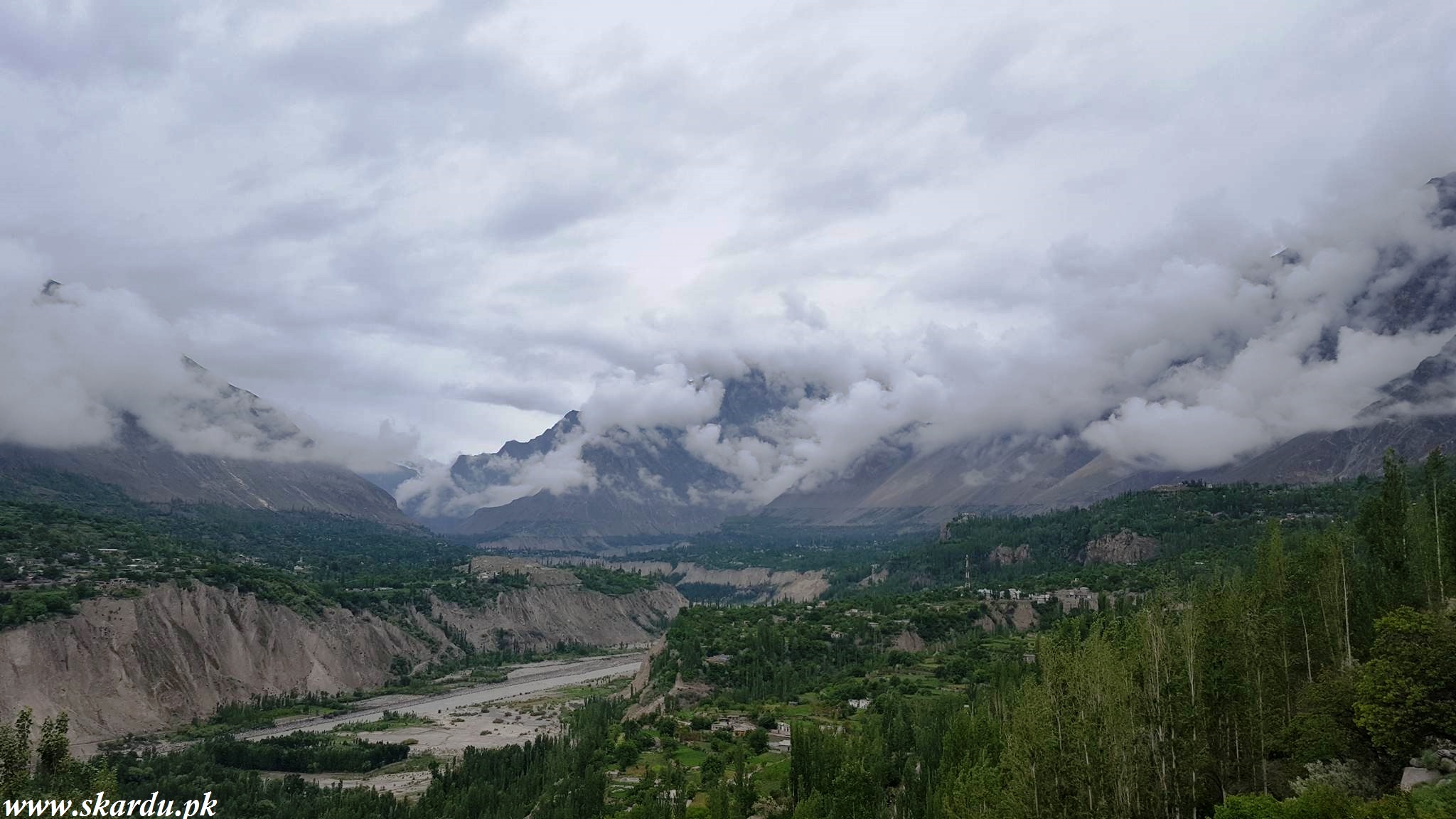Hunza valley is located in Gilgit Baltistan Pakistan. Hunza is a famous tourist destination in Pakistan. Tourists from all around the world visit Hunza for trekking, vacations and climbing mountains.
The weather in Hunza varies throughout the year. In summer the temperatures ranges from 20°C to 30°C. So it is the best season to visit Hunza. The temperatures drops to -10°C to -5°C in winter which creates it a snowy wonderland.

To reach Hunza Valley, you can take different routes from Lahore, Islamabad, Gilgit, or Skardu. There are also tour packages available to make your trip easier and more organized.
Hunza offers a variety of attractions, such as historic forts, beautiful peaks, and blue water lakes like Attabad Lake, Borith Lake, Passu Cones and Rush Lake. The best time to visit Hunza is from April to September.
When visiting Hunza, you can stay in some of the best hotels, like Luxus Hunza Attabad Lake Resort, Eagle Nest Hunza, Darbar Hotel Hunza, Serena Hunza, or Tourist Cottage Hunza. These hotels provide comfort and stunning views of the valley.
Overall, Hunza Valley is a magical destination with breathtaking landscapes and a rich cultural heritage, attracting travelers from around the world.
History
The history of the Hunza Valley dates back to its time as a princely state. In 1974, Zulfiqar Ali Bhutto dissolved the princely states of Hunza and Nagar. The local rulers of Hunza were known as Mir or Tham. The valley maintained its independence for over 900 years until the British empire gained control in 1892. The Mir later escaped to Chinese Turkistan (present-day Xinxiang Autonomous region)
Hunza Valley has seen the influence of various religions throughout its history. Buddhism spread through Kashmir and Gandhara, while Bon Mat, an indigenous religion of Tibet, was also practiced in Hunza and Baltistan. Islam arrived in Hunza around 1,000 years ago during the time of the 30th Imam Ismaili Muslims.

Tourism in Hunza Valley
Tourism in the Hunza Valley is primarily centered around its mighty peaks, some of which rise above 7,000 meters. Tourists can enjoy breathtaking views of mountains such as Rakaposhi, Ultar Sar, Bojahagur Duanasir II, Diran Peak, Spantik, Ghenta Peak, Hunza Peak, Darmyani Peak, and Bublimating. Additionally, there are several other 7,000-meter peaks in the region, including Distaghil Sar, Batura, Batura II, Batura III, Muchu Chhish, Kunyang Chhish, Shispare, Passu Sar, Kanjut Sar, Yukshin Gardan Sar, Pumari Chhish, and Momhil Sar. The valley is also home to ancient watchtowers in Ganish, Baltit Fort, and Altit Fort, as well as lakes like Attabad Lake, Borith Lake, Shimshal Lakes, and Hassanabad Lake. The Khunjerab Pass, a 4,693-meter-high mountain pass on the Pakistan-China border, is another notable attraction. Additionally, the Batura Glacier is the fifth-longest glacier in the world outside the polar region.
If you’re planning a trip to Hunza, here are some of the best places to visit in the valley:
- Karimabad
- Atabad Lake
- Khunjarab Pass
- Borith Lake
- Passu Cones
- Altit Fort
- Baltit Fort
- Ganish Village
See More Places to visit in Hunza Valley
Hunza People
Hunza people is known as the Brusho people. They speak the Burushaski language. It is an isolated language which is not related with any other language family. Other languages spoken in the Hunza Valley include Wakhi and Shina. There are various myths about the Hunza people, such as their long lifespan. Nevertheless, it is widely acknowledged that the Hunza people lead a healthy lifestyle and have low rates of certain diseases, as demonstrated by research conducted by Robert McCarrison and Henri Coanda. Moreover, the Hunza Valley boasts a high literacy rate in Pakistan.
The people of Hunza Valley follows the Ismaili Shia sect of Islam. There are also individuals who adhere to Shia Isna Ashari and Sunni Muslims.
How to get to Hunza Valley
To visit the Hunza Valley, you can travel via Karakoram Highway. The distance from Islamabad to Hunza is approximately 572 km. There are two routes you can take from Islamabad:
- Islamabad – Mansehra – Hazara Motorway – Karakoram Highway – Besham – Chilas- Jaglot – Hunza
- Islamabad – Mansehra – Naran – Babusar – Jaglot – Hunza
Skardu.pk is one of the leading authentic news and information platform focusing on adventure tourism, regional and world affairs.

